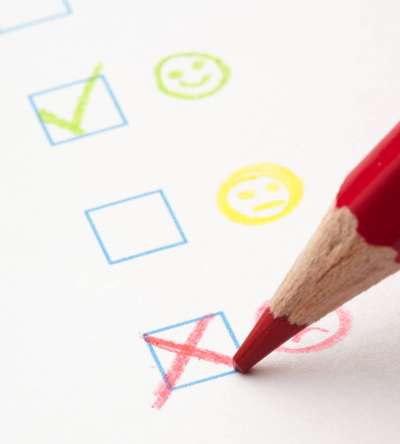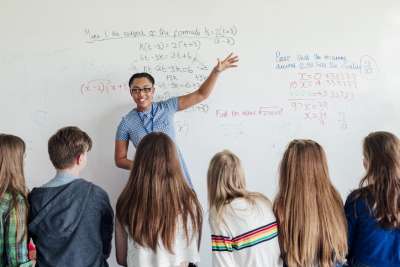Teach students the same technique research mathematicians use! (Seriously.)
"Guess and Check" is a problem-solving strategy that students can use to solve mathematical problems by guessing the answer and then checking that the guess fits the conditions of the problem.Need more tips and tricks for teaching math? You can find them in our math resources center.
Math Problem Solving: The Guess and Check Method
In this article, we will explore the guess and check method, a powerful yet simple problem-solving strategy used in mathematics. We’ll guide you on how to teach this method effectively, using concrete examples and a step-by-step approach.
What is the Guess and Check Method?
The guess and check method is a problem-solving strategy that students can use to solve mathematical problems. This strategy involves guessing the answer and then checking that the guess fits the conditions of the problem.
For example:
The following problem would be best solved using the guess and check method:
Of 25 rounds at the regional spelling contest, the Mighty Brains tied 3 rounds and won 2 more than they lost. How many rounds did the Mighty Brains win?
Why Is This Strategy Important?
All research mathematicians use guess and check, and it is one of the most powerful methods of solving differential equations, which are equations involving an unknown function and its derivatives.
A mathematician's guess is called a "conjecture" and looking back to check the answer and prove that it is valid, is called a "proof." The main difference between problem-solving in the classroom and mathematical research is that in school, there is usually a known solution to the problem. In research, the solution is often unknown, so checking solutions is a critical part of the process.
When to Use the Guess and Check Method?
The guess and check method is particularly useful when a word problem provides the value of both items, a total quantity, and the total value.
It is also a useful method when there is a limited set of possibilities that can be easily enumerated and checked.
Finally, it’s a handy method when the mathematical problem doesn't lend itself to other strategies. It is a good way to begin understanding the problem at hand.
How to Teach the Guess and Check Method
For this section, we will help you understand how to teach students to use the guess and check method using the following word problem as an example:
Ben knows 100 baseball players by name. Ten are Red Sox. The rest are Blue Jays and Diamondbacks. He knows the names of twice as many Diamondbacks as Blue Jays. How many Blue Jays does he know by name?
1. Ensure students understand the problem
The first step to solving a word problem like the one above is to make sure you understand what is being asked. Demonstrate to students that understanding is the first step.
Understanding the problem involves finding key pieces of information needed for finding the answer. This may require reading the problem several times, and/or having students put the problem into their own words.
Example: "I know there are twice as many Diamondbacks as Blue Jays. There are 10 Red Sox. The number of Blue Jays and Diamondbacks should equal 90.”
2. Choose a strategy
For this problem, we will be using the guess and check method.
Guess and check is often one of the first strategies that students learn when solving problems. This is a flexible strategy that is often used as a starting point when solving a problem, and can be used as a safety net, when no other strategy is immediately obvious.
3. Use a table to chart your guesses
Now, solve the problem. You may want to set up a table to record the guesses.
| Guess Number | Blue Jays | Diamondbacks | Red Sox | Total |
| First Guess | 10 | 20 | 10 | 40 |
Guess a greater number of Blue Jays.
| Guess Number | Blue Jays | Diamondbacks | Red Sox | Total |
| First Guess | 10 | 20 | 10 | 40 |
| Second Guess | 20 | 40 | 10 | 70 |
Now guess a greater number of Blue Jays.
| Guess Number | Blue Jays | Diamondbacks | Red Sox | Total |
| First Guess | 10 | 20 | 10 | 40 |
| Second Guess | 20 | 40 | 10 | 70 |
| Third Guess | 40 | 80 | 10 | 130 |
Now guess a number lesser than 40 and greater than 20.
| Guess Number | Blue Jays | Diamondbacks | Red Sox | Total |
| First Guess | 10 | 20 | 10 | 40 |
| Second Guess | 20 | 40 | 10 | 70 |
| Third Guess | 40 | 80 | 10 | 130 |
| Fourth Guess | 30 | 60 | 10 | 100 |
That is the answer.
4. Check over your work
After your students find the answer, remind them to check over their work.
Read the problem again to be sure the question was answered.
Yes, I found the number of Blue Jays.
Check the math to be sure it is correct.
30 doubled is 60. 30 + 60 + 10 = 100
Determine if the best strategy was chosen for this problem, or if there was another way to solve the problem.
Guess and check was a good way to solve this problem.
5. Explain your work
The last step is explaining how the student found the answer. Demonstrate how to write a paragraph describing the steps and how decisions were made throughout the process. Have students justify their answers.
6. Guided Practice
Have students try solving this problem using the strategy of Guess and Check.
Of 25 rounds at the regional spelling contest, the Mighty Brains tied 3 rounds and won 2 more than they lost. How many rounds did the Mighty Brains win?
Have students work in pairs, groups, or individually to solve this problem. They should be able to tell or write about how they found the answer and justify their reasoning.
Stretch this Strategy
The guess and check method can be made more sophisticated by improving each guess based on the last guess. Encourage students to analyze their guesses to determine what the next guess should be. Students can use patterns in the problem or in their guesses to determine the correct guess.
Students may not want to use any other strategy once they have learned guess and check, because it is so easy to use. When children are completely stuck, guessing and checking provides a useful place to start, but may not be the most efficient strategy. As problems get more difficult, other strategies become more important and more effective, but by starting with guess and check, the students may find a more efficient strategy that leads to a solution.














